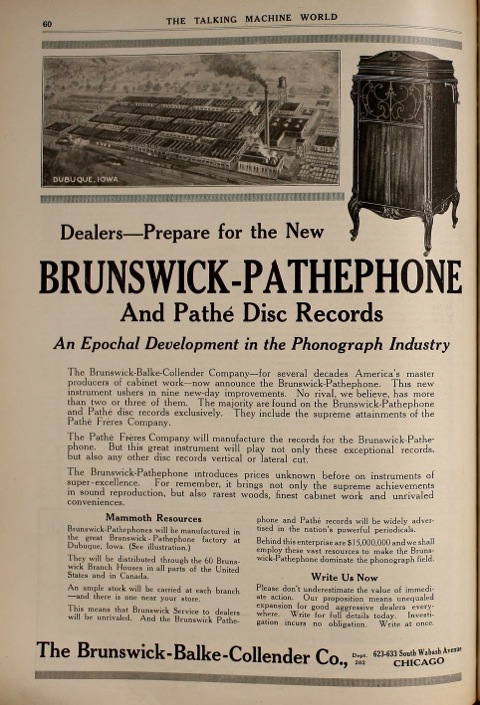Brunswick was primarily a manufacturer of high quality woodworks for bars and clubs, most notably their line of backbars and pool tables. The talk of Prohibition and the increasing likelihood of its passage, led it to introduce its own line phonographs in the Summer of 1916.
Initially, the product was a collaboration with Pathé Freres who were well established in Europe but less well known in the United States. The Pathé records were incompatible with either the standard Victor Talking Machines or with Edison’s Disc Phonograph and the French company was quite anxious to establish its products in this country. The new Brunswick-Pathephone was a promising tool since it featured the ability to play all three types of records. There were other brands that also offered this feature but none of the other companies were as well established as Brunswick, who had large factories and a broad distribution network.

The Brunswick-Pathé alliance was brief, and appears to have been designed to give Brunswick dealers immediate access to a large stock of records while providing Pathé with additional sales outlets. The term “Brunswick-Pathephone” seems not to have been used once production began. Pathé hill-and-dale records were featured heavily in the initial advertising, but within a few years Brunswick was manufacturing its own lateral records on a large scale. Pathé continued offering phonographs under its own brand in the United States (see George Copeland & Ron Dethlefson’s book Pathé Records and Phonographs in America).
Return to the Brunswick summary page to read R. J. Wakeman's comprehensive history of Brunswick's phonograph and record business.